As you know if you've been reading along, I've been experimenting with different combinations of the Duelund DCA tinned-copper tone cables for the Duelund-Altec Project (HERE), both as speaker cables and for connecting the Duelund CAST tinned-copper crossovers to the Altec 804A 16-Ohm compression drivers.
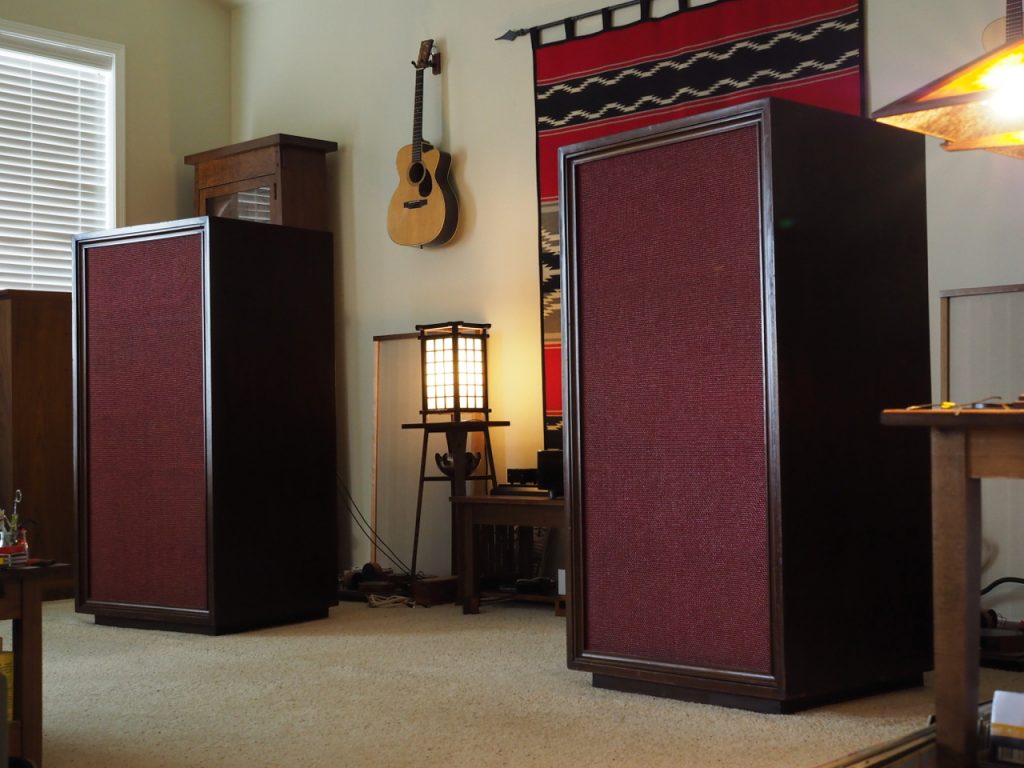
Stokowski Altec's with their Duelund CAST Sn-Cu crossovers.
I've already settled in on the Duelund DCA16GA tinned-copper cable for connecting the breadboarded Duelund CAST tinned-copper crossovers to the Altec 803B 16-Ohm bass drivers, so at this point its just down to deciding on which of the DCA cable combinations to use for speaker cables and for connecting the Altec 804A 16-Ohm compression drivers.
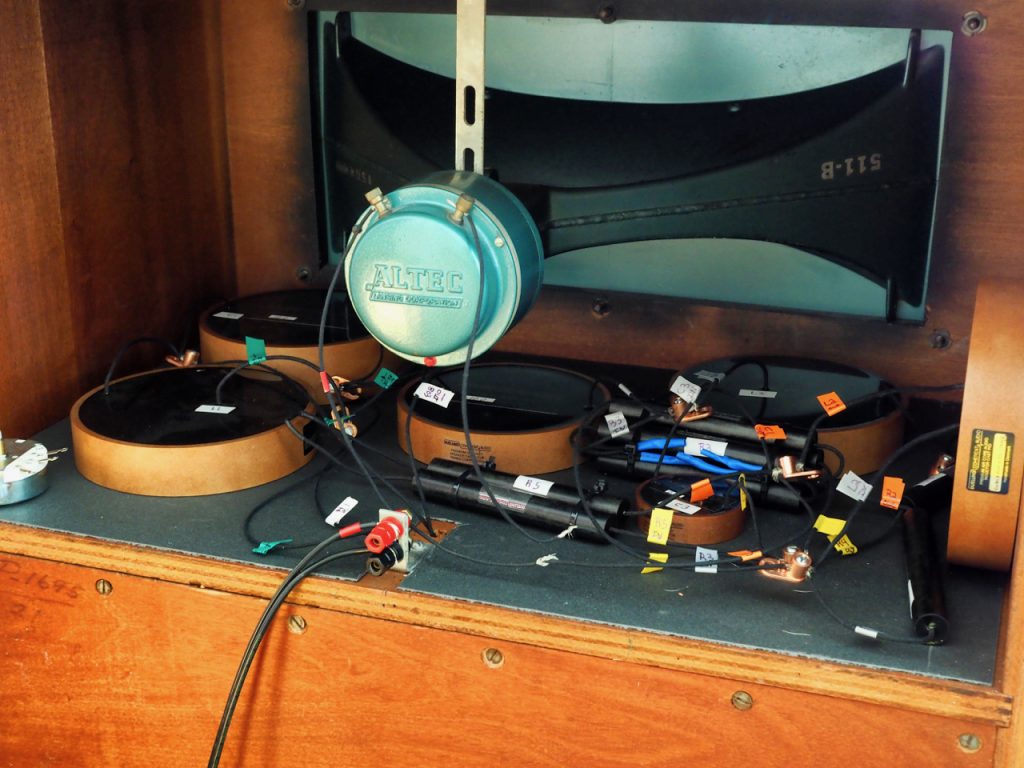
Duelund CAST Sn-Cu crossover breadboard in the Stokowski Altec.

Connecting the Duelund CAST Sn-Cu crossover to the Altec 803B driver with Duelund DCA16GA Sn-Cu wire.
You can go back and review the various recent posts about my real-time listening impressions of the 600V DCA12GA with its CAST-like dielectric, or the regular DCA12GA and DCA16GA with their baked oil-soaked cotton dielectric to get more detailed impressions, or just refer to my very broad impressions of the combinations below.
Keep in mind my overall retrospective impressions reported below are based on how well these cables match the Duelund CAST tinned-copper crossovers, the Altec 804A 16-Ohm compression drivers and Altec 803B 16-Ohm bass drivers, with my SPEC RSA-M3 EX Real Sound Amplifier that is the reference for this project, and of course my personal preferences for the performance I'm seeking.
The message here is you have to experiment a little to find what the best combination of Duelund DCA tinned-copper cables will be for you in your particular application, as their is no universal "best" when it comes to matching every application or listener's preferences.
Also, let me mention that due to the "settling-in" time inherent to tinned-copper cables - even well run-in ones can take a few days to settle back into their stable voicing when re-installed into the system, so quick A-B impressions don't work well and can mislead you, as you really need to let them play music for a few days after installing them to hear what they're all about before making any final judgements.
Duelund 600V DCA12GA as Speaker Cables & Duelund DCA16GA for Connecting the Compression Drivers
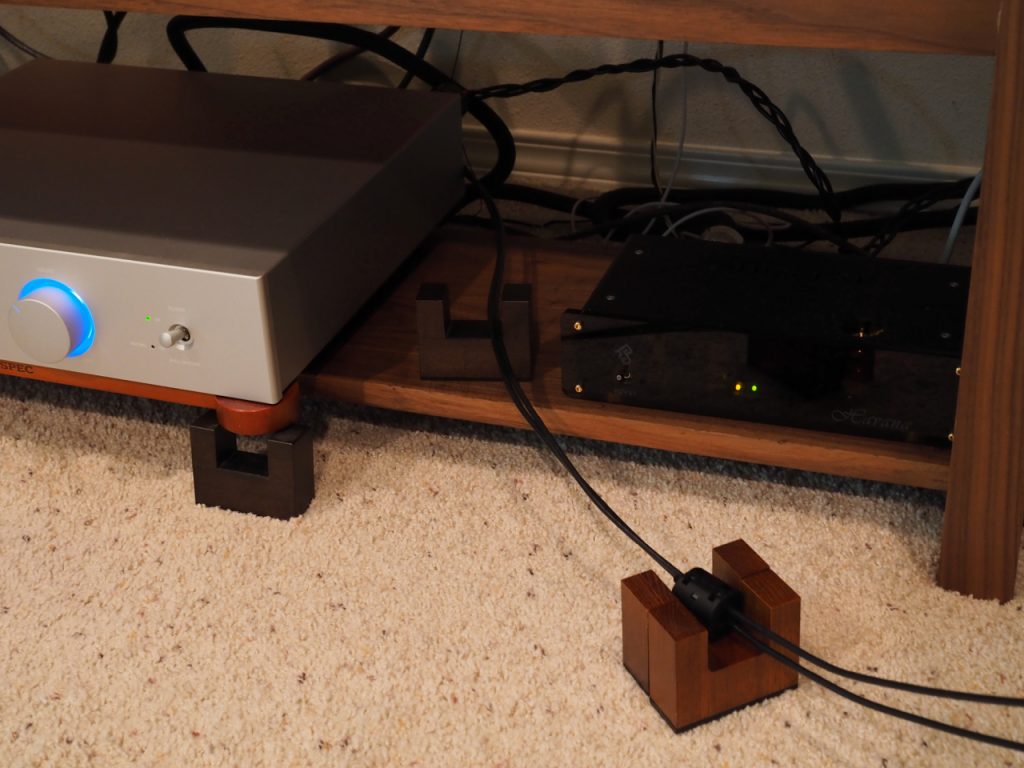
600V DCA12GA speaker cables connecting the SPEC amp to the Altec's.
The first combination I tried was the Duelund 600V DCA12GA tinned copper cables as speaker cables, and the Duelund DCA16GA for connecting the Duelund CAST tinned-copper crossovers to the Altec 804A 16-Ohm compression drivers.
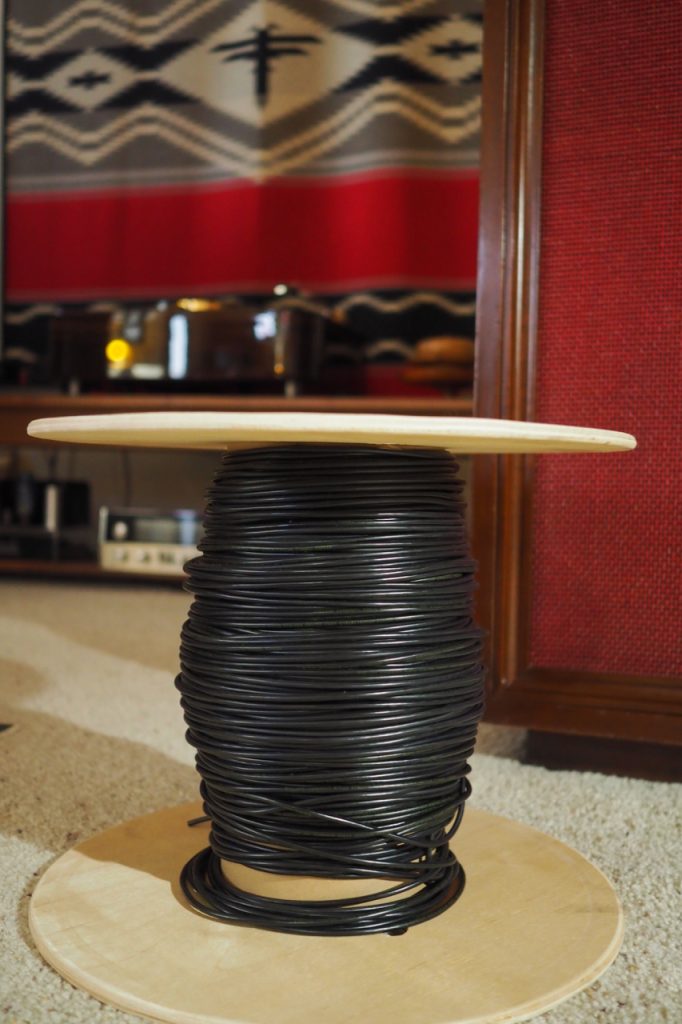
The new 600VDC Duelund DCA12GA tinned-copper tone wire!
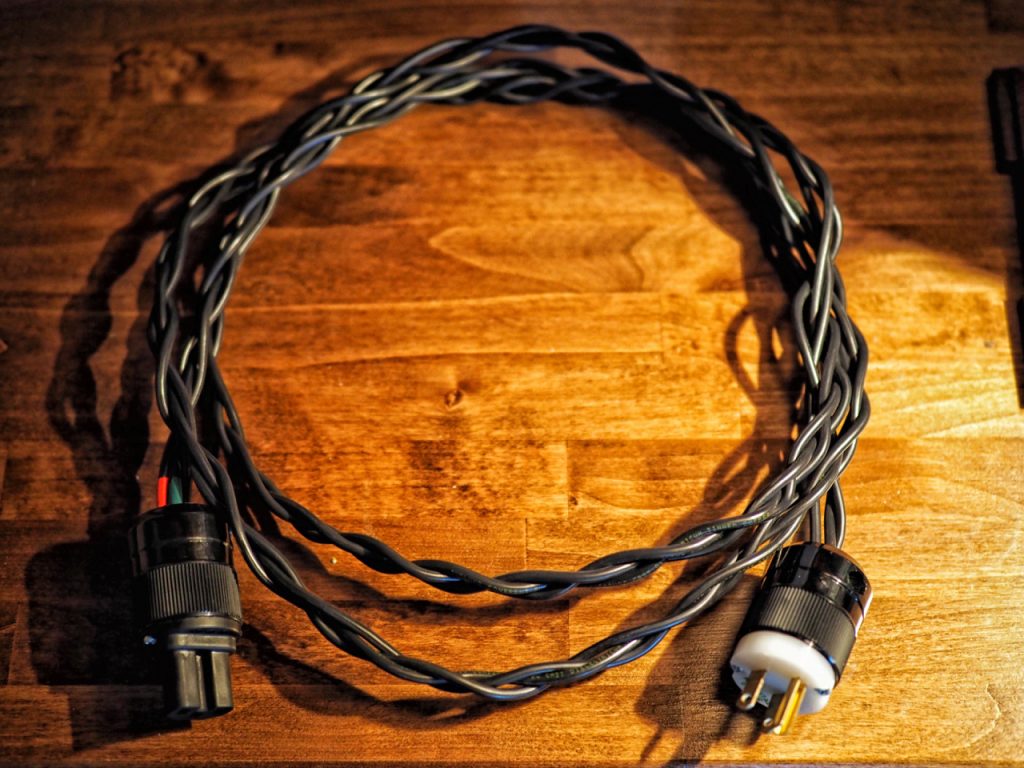
600V Duelund DCA12GA power cable.
Originally I had dismissed the idea of using the 600V DCA12GA as speaker cables given their intended purpose was for use in power cables (thus the 600V rating), but after using it as speaker cables for a while I realized that they actually work very nicely for speaker cables, and some listeners may prefer them in that role to the regular DCA12GA. I didn't see that one coming, and I may be one of those listeners.
However, in order to use the 600V DCA12GA for speaker cables, they really need at least six days of conditioning on a Cable Cooker to get the desired voicing in a speaker cable application on my Altec's (also recommended for 600V DCA12GA power cords), otherwise you will not hear what the 600V DCA12GA is capable of.
So keep that caveat in mind if you want to try the 600V DCA12GA as speaker cables, as you'll probably never get them where they need to be if you just try running them in in-situ.
In-situ run-in works well for the regular DCA12GA, DCA16GA, and DCA20GA, by the way, and for them that has been my preferred way to run them in. Although, as you'll read in a little bit, I decided to try conditioning the DCA16GA with the Cable Cooker just for kicks to hear what would happen with the Altec's, even though that didn't work well for me with DCA16GA when used on my Tannoy Westminster Royal Special Edition loudspeakers. Who knows, maybe the outcome will be different with the Altec's? I just wanted to satisfy my curiosity on that point.
Ok, now with the preliminaries out of the way, let me give you an overview of my broad retrospective impressions of the Duelund 600V DCA12GA tinned copper cables as speaker cables, and the Duelund DCA16GA for connecting the Duelund CAST tinned-copper crossovers to the Altec 804A 16-Ohm compression drivers.
I'm not quite sure how to describe this performance attribute fully yet, but I found the real strength of this combination was that it provided an intensely musical presentation that provided an extremely strong connection to the emotional content of music.
When I was listening using this combination of DCA cables I was continually bowled over by the stunning musicality and the intense emotional connection to the music they provided, and the "I'm in love!" feelings they generated in me while listening.
This combination really appealed to me in a right-brain sort of way, stimulating the creative / artistic side of my perceptions to the extreme. With this combination I wasn't thinking about the performance analytically at all in terms of musicality or audiophile-style sonics, but rather how the music felt and where it took me emotionally, instead of how it "sounded" per se.
Of course my analytical and methodical thinking left-brain was eventually forced into service to provide a few observations for you, but somewhat resistantly.
From a musicality perspective, in terms of timbral realism, the resolution of tone color, melody, harmony, rhythm, tempo, dynamics, and loudness (the ability to play naturally at live-like levels appropriate to a piece of music), the performance of the 600V DCA12GA and DCA16GA combination was superb in its live-like musicality.
From an audiophile-style sonics perspective, while still being quite good, their transparency and resolution of fine detail was less than with other the DCA combinations, as I'll discuss in a moment. In the same sort of way I found the soundstage and soundspace presentation, and the imaging, to be quite good in a live-music sort of way, but to fall short of the exaggerated sense of those traits that some audiophiles will prefer, and that the other combinations of DCA can provide to a greater extent.
So the overall effect of the Duelund 600V DCA12GA tinned copper cables as speaker cables, and the Duelund DCA16GA for connecting the Duelund CAST tinned-copper crossovers to the Altec 804A 16-Ohm compression drivers, was to provide an extremely strong emotional connection to the music, superb musicality, but more natural sounding "sonics" with a somewhat diminished sense of audiophile-style sonics, compared to other combinations.
Overall the presentation was a little dark in the upper-midrange on up, perhaps a little closed-in sounding on top, but with a such a beautiful and colorful live-like presentation of the music that it essentially shorted-out my left-brain analytical thinking and allowed me to melt into the emotional content of the music to a degree that I've never experienced before.
As I said earlier, "What I'm hearing from the cooked 600V DCA12GA tinned-copper speaker cables is world class in terms of musicality, sonics, and emotional involvement with the music, which means that with a little conditioning, you can build a world class set of 3-meter speaker cables for a little less than $120 USD."
Breaking News: Check out Bill's intriguing comment on the "The Duelund-Altec Project: DCA16GA vs DCA20GA for the Altec 804A 16-Ohm compression drivers?" post HERE, about his similar experiences with 600V DCA20GA tinned-copper cable used as interconnects, and in particular note Bill's comment about the 600V DCA20GA's superior presentation of the harmonic content, which I now want to listen a little more closely for with the 600V DCA12GA.
I thought Bill's comment was very insightful, and now I'm really wanting to try the 600V DCA20GA as interconnects, and for connecting the Duelund CAST Sn-Cu crossovers to the Altec compression drivers.
More to come on that.
Duelund DCA16GA as Speaker Cables & Duelund DCA16GA for Connecting the Compression Drivers
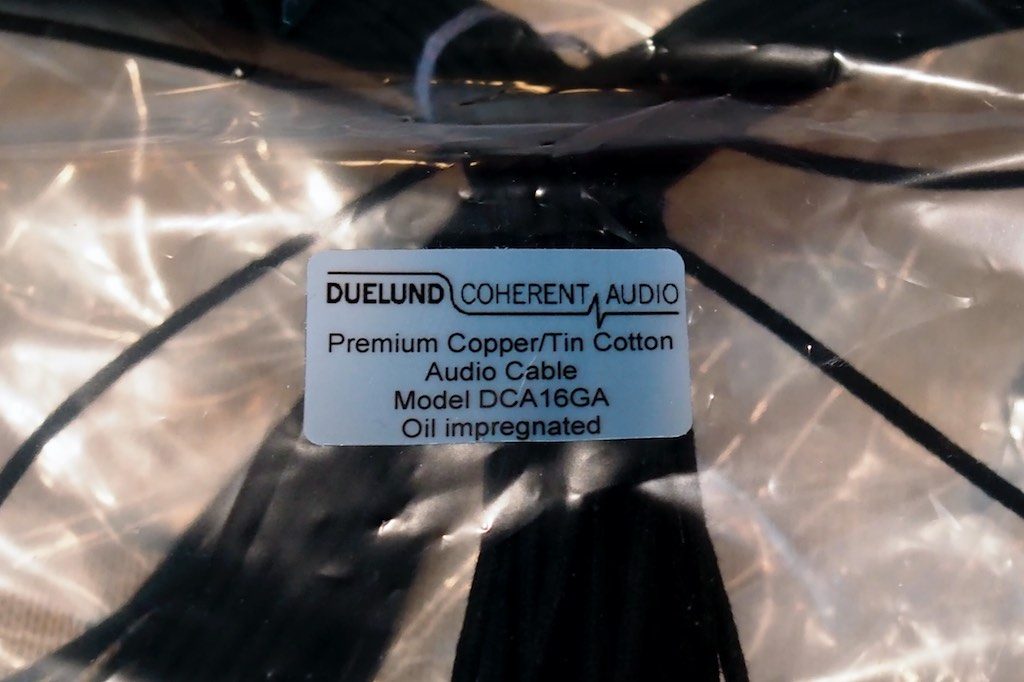
With the DCA16GA I initially let it run-in in-situ, as that's what always worked best with my Westminster loudspeakers.
After letting the DCA16GA run-in and settle-down in the system, the DCA16GA as speaker cables presentation was vibrant, transparent, resolving, and gave a huge sense of being immersed in the acoustic space of the recording.
Imaging was impressive, the soundstage was wide, deep, natural in height, there was a huge sense of the acoustic space of the recording venue, and the DCA16GA was very resolving with all kinds of satisfying musical nuance.
From a musicality perspective, timbral textures were superb, and motional elements like rhythm, melody, beat, and tempo were all believably realistic, engaging, and satisfying.
Overall, DCA16GA as speaker cables delivered a vivid sense of presence, great tone, and engaging dynamics that made for very satisfying music listening.
The 600V DCA12GA speaker cables were a bit creamier and richer sounder than the DCA16GA, and provided a stronger connection to the beauty and emotional content of the music, engaging my right-brain "feelings" more, but the DCA16GA was still very musical and enjoyable, although on the left-brain & right-brain spectrum, it falls closer to the middle than does 600V DCA12GA, which were planted firmly in my right-brain creative / artistic side of my perceptions to the extreme.
Duelund DCA12GA as Speaker Cables & Duelund DCA16GA for Connecting the Compression Drivers
With the regular DCA12GA, the presentation is smooth, vivid, open, and nuanced, and provides more resolution than does the 600V DCA12GA, but not as much resolution and vividness as with the DCA16GA.
With the DCA12GA the images are more defined, and articulation of fine detail is more apparent than with the 600V DCA12GA, but it does lack the hypnotically strong sense of musical beauty and emotional connection to the music that the 600V DCA12GA so easily provides.
Using my analogy of placement on the left-brain and right-brain spectrum, the DCA12GA falls a little to the right of the DCA16GA, but decidedly to the left of the 600V DCA12GA.
I keep going back and forth in my perceptions on whether I like the regular DCA12GA or the 600V DCA12GA the best as speaker cables in the Duelund-Altec Project context. My head tells me I prefer the regular DCA12GA, but my heart casts its vote for 600V DCA12GA. If you find that a little bit confusing, join the club, as I am a little confused by it myself.
Duelund DCA12GA as Speaker Cables & Duelund DCA20GA for Connecting the Compression Drivers
I left the DCA12GA speaker cables in place, but switched out the DCA16GA for DCA20GA on the compression drivers.
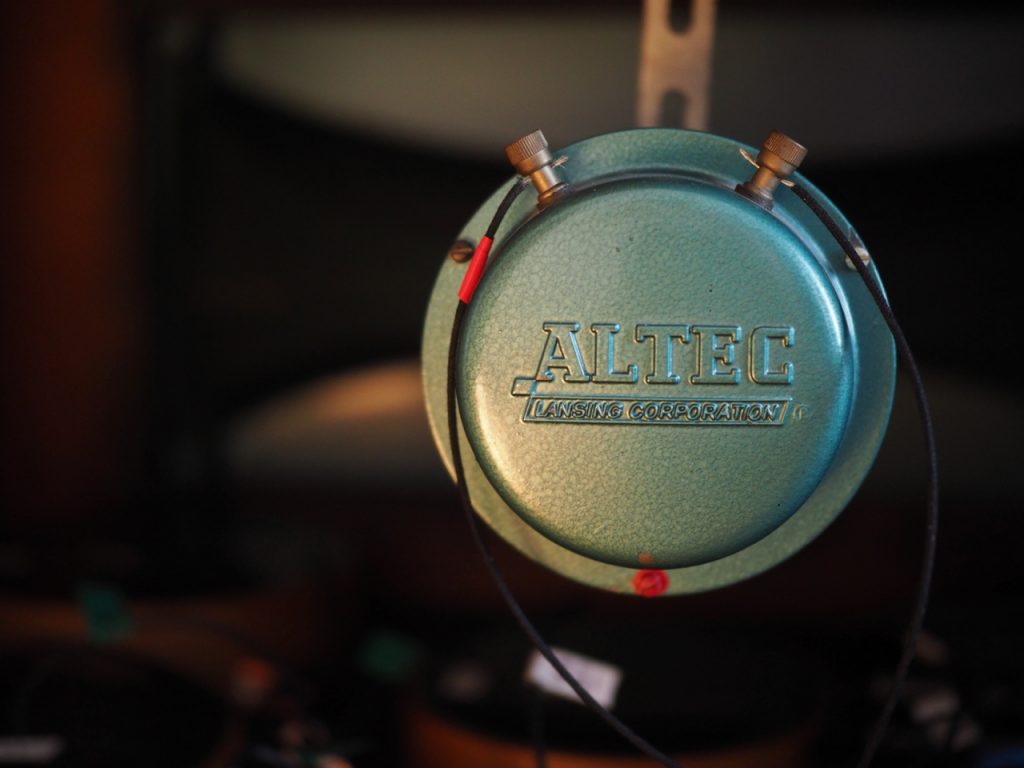
DCA20GA tinned-copper tone wire on the Altec HF
As I said HERE, "The well run-in DCA16GA gives a vivid, tonally sophisticated, timbrally rich, and an incredibly musically seductive presentation to the "Stokowski" Altec's, and it's hard to fault the result. I've been listening to them hour upon hour and aurally drooling at the result."
With well run-in DCA20GA tinned-copper tone wire on the Altec 804A 16-Ohm compression drivers, I thought that the DCA20GA was more transparent than the DCA16GA in this application, highlighted the high-frequencies more, provided more nuance and detail, and provided more "presence" in the mid-range on up.
The combination of the DCA12GA as speaker cables, and the DCA20GA to connect the compression drivers, puts the overall presentation more into classical "audiophile" left-brain territory, with more emphasis on the audiophile sonic elements of soundstage, soundspace, imaging, transparency, and resolution.
Musicality is actually very good with this combination, but not as ravishingly beautiful as with the 600V DCA12GA and DCA16GA combination, so I put it more in the left-brain side of the listening spectrum compared to the other combinations.
While I found myself impressed with how this combination sounded overall, my right-brain preferred the musicality of the 600V DCA12GA and DCA16GA combination, even thought it didn't "sound" as good in the classical audiophile "sonic" sense.
The regular DCA12GA as speaker cables, and with DCA20GA connecting the compression drivers, "sounded" better than the 600V DCA12GA as speaker cables & DCA16GA on the compression drivers, but it didn't provide the latter's incredible emotional connection to the music.
I suspect music lovers will prefer the 600V DCA12GA & DCA16GA combination, while classic audiophiles will go more for the regular DCA12GA & DCA20GA combination.
To keep everything in perspective, all of these combinations provide their own strengths during listening, and are very enjoyable to listen to, but listener preferences being what they are, different listener's will gravitate more to one than the other, so the best combination will be the one you like the best, simple as that.
I might add that it's kind of fun try the different Duelund DCA combinations, it's a little bit like wine or craft beer tasting, where you get to experience all those cool flavor varieties, but eventually you'll settle into what you like best. Given the inexpensive nature of the Duelund DCA cables, there's no reason a listener can't have a set of each of the DCA cables, and then mix it up a little over time just to change things up a bit for fun.
Duelund DCA16GA as Speaker Cables & Duelund DCA20GA for Connecting the Compression Drivers
This isn't exactly an apples to apple sort of comparison to my earlier DCA16GA combination of speaker cables & compression drivers connections, but I just got done conditioning the DCA16GA speaker cables so I thought I'd go ahead and swap out the regular DCA12GA speaker cables for them, and give them a listen along with the DCA20GA connecting to the compression drivers.
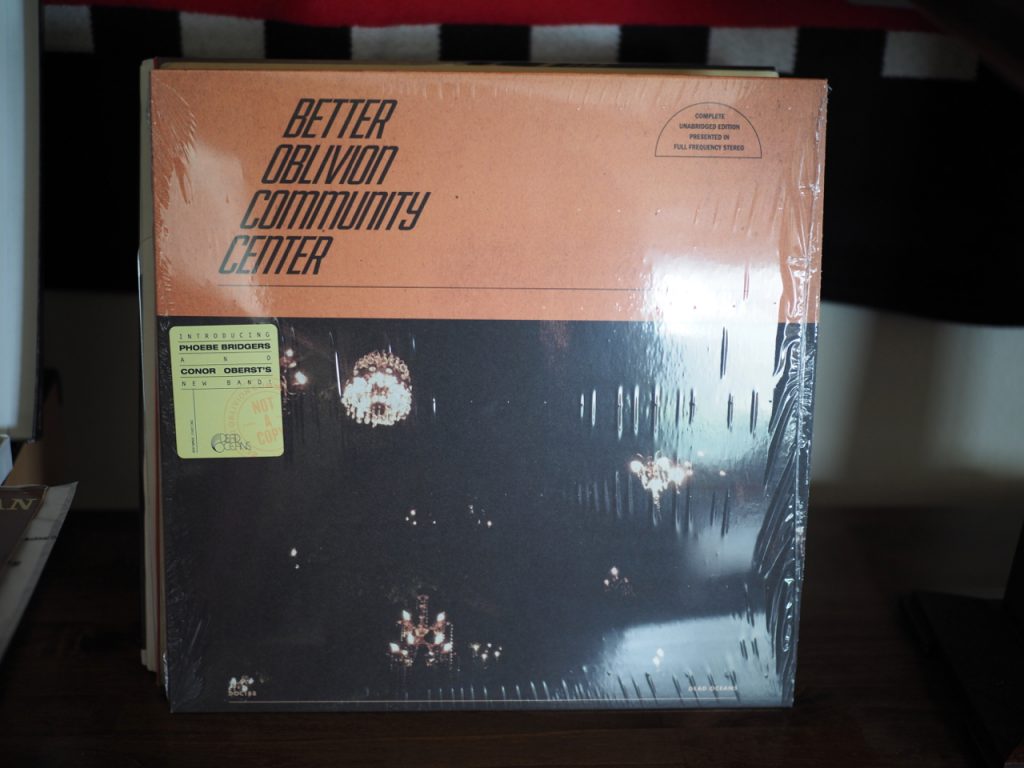
Before I changed out the regular DCA12GA for the Cable Cooked DCA16GA, I decided I wanted to listen to the Better Oblivion Community Center's Ten Captivating Stories album I just got, so I could compare the well run-in DCA12GA speaker cables to the cooked DCA16GA speaker cables with the same setup.
I love the overall musical vibe that the American indie rock band Better Oblivion Community Center (Phoebe Bridgers, Conor Oberst, et al), gets on Ten Captivating Stories, and it sounds gorgeous on the "Stokowski" Altec's with the Duelund CAST Sn-Cu crossovers.
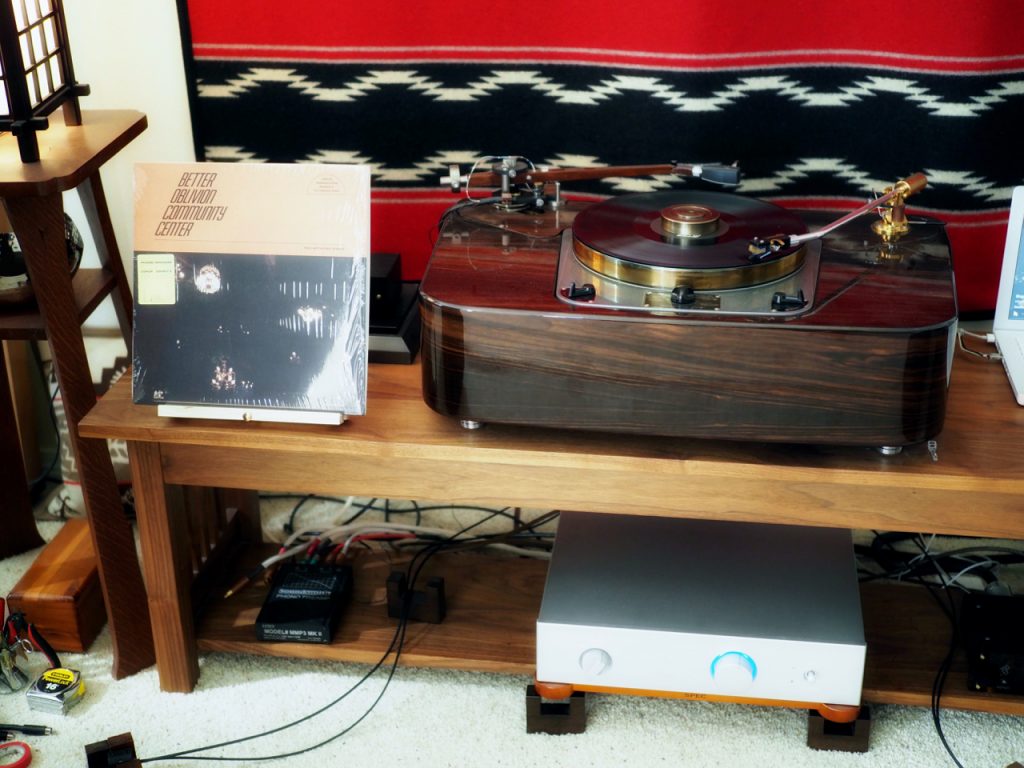
Generally speaking, the sound of the DCA12GA was as I've described above, with an excellent balance of musicality & sonics that I think a lot of listeners will enjoy, including me.
Have you ever thought you knew something, and then found out that you didn't? That's happened to me twice recently with the Duelund DCA tinned-copper cables.
The first time was when I thought the 600V Duelund DCA12GA wasn't going to be a good choice for speaker cables. Six days of conditioning on the Cable Cooker led me to realize that the 600V DCA12GA performs very well as speaker cables, and are right in there among my favorites now. Mea culpa.
The second time was thinking that running in the regular DCA tinned-copper cables with the baked oil-soaked cotton dielectric on the Cable Cooker didn't work very well, and in fact was counterproductive, because that was my experience in my cooking & listening sessions with my Tannoy Westminster Royal SE's, where letting the cables run-in naturally in-situ provided better results.
Well, I conditioned the Duelund DCA16GA tinned-copper speaker cables on the Cable Cooker for three days, and the overall benefit was much the same as when I did the same thing with the 600V DCA12GA, which was not at all what I was expecting based on my previous experiences with my Westminster's. Mea culpa.

"Stokowski" Altec's with breadboard Duelund CAST tinned-copper crossovers.
It turns out my "Stokowski" Altec's respond differently to conditioned DCA cables than my Westminster's did, and for whatever reason, very favorably.
It turns out that the cooked DCA16GA cables took on a new relaxed ease in musicality - more like the 600V DCA12GA - while still having most of their previous sense of vibrancy, transparency, resolution, and voluminous sense of acoustic space in the recording. Imaging was still impressive, the soundstage was still wide, deep, natural in height, but everything had a little more natural sounding, but still live-like overall balance.
The cooked DCA16GA as speaker cables, combined with the DCA20GA connecting the compression drivers sounds extremely good, is very musical overall, and has really impressed me. The result scores very high in musicality, with the audiophile sonics also being very good, while still maintaining a natural sounding live-like overall balance.
The cooked DCA16GA speaker cables, with the DCA20GA connecting the compression drivers, is perhaps the most evenly balanced sounding from low-frequencies to high-frequencies of all the combinations I've tried so far.
I found the 600V DCA12GA speaker cables, in combination with DCA16GA connecting the compression drivers, to still be more emotionally engaging, but they deviate more obviously from neutrality than does the cooked DCA16GA & DCA20GA combination.
The resulting performance of the cooked DCA16GA speaker cables plus the DCA20GA connecting the compression drivers, has put me back on my heels a bit. It's not really what I was expecting, but it's an extremely musical combination with great - yet still natural sounding - audiophile-style sonics. From the left-brain and right-brain spectrum perspective, it's like the left-brain and right-brain have signed a peace treaty with each other that allows both to be engaged at the same time, and its a seductive combination.
I sort of wanted to be done at this point with my Duelund DCA comparisons as speaker cables, and for connections to the compression drivers, but with finding out how good the result was with conditioning the DCA with the Cable Cooker, I may have to do the same for the DCA12GA and DCA20GA to satisfy my curiosity. Argh. Not the outcome I expected or wanted, but a darn good outcome, all the same.
So what's the path forward now? Well, after what Bill said in his comment, I'm really looking forward to trying the 600V Duelund DCA20GA, and of course I'll need to try a little cable conditioning of the DCA12GA and DCA20GA with the Cable Cooker to be thorough.
I hope all of these Duelund DCA tinned-copper wire comparisons haven't confused you. I guess the moral of this post is that you just have to try various DCA combinations, with various amounts of conditioning, to find out what works best with your associated equipment, and for your personal tastes. There's not a wrong answer here, you just have to fiddle around a little to find out what you like best.
Here's the deal: The vintage-style Duelund DCA tinned-copper cabling provides a combination of musicality and audiophile-style sonics that I like better than that of any other cables in my experience. However, you have to be willing to do a little tedious trial & error experimentation to get things dialed in perfectly for your tastes and associated equipment, and the preferred combination of gauges and conditioning will not be the same for everyone. That's ok.
That's it for now, I've worn myself out doing cable comparisons today.
I'll be reporting back as I do more listening trials with the 600V DCA cables and the regular DCA cables, and at some point I'll work up some general musical & sonic trends for the various DCA cables that you can use as benchmarks, but until then I suggest you roll up your sleeves and do a little DCA experimentation of your own. It's good, and relatively inexpensive fun, and the final outcome can be staggeringly good.
As always, thanks for stopping by, and may the tone be with you!



























